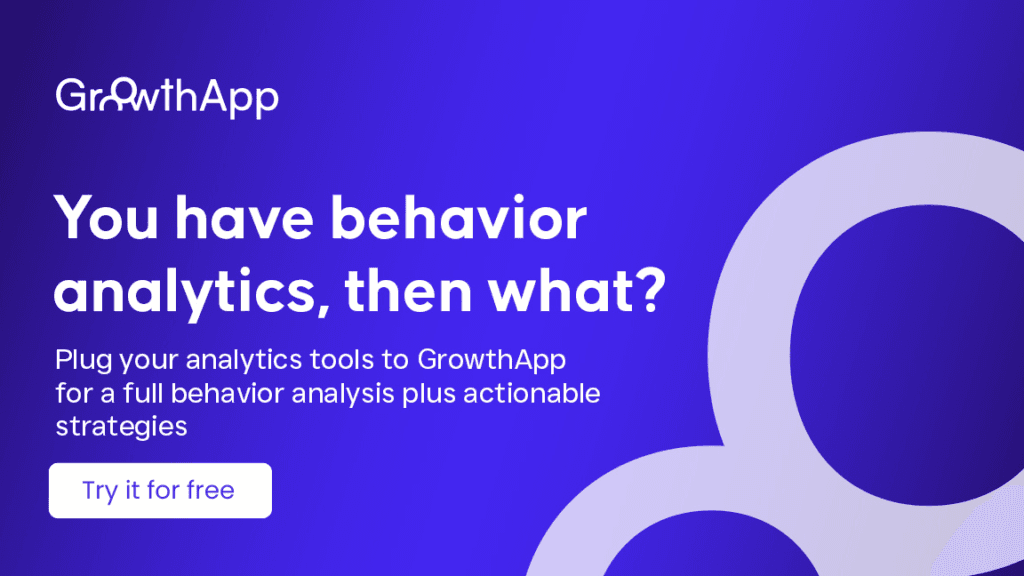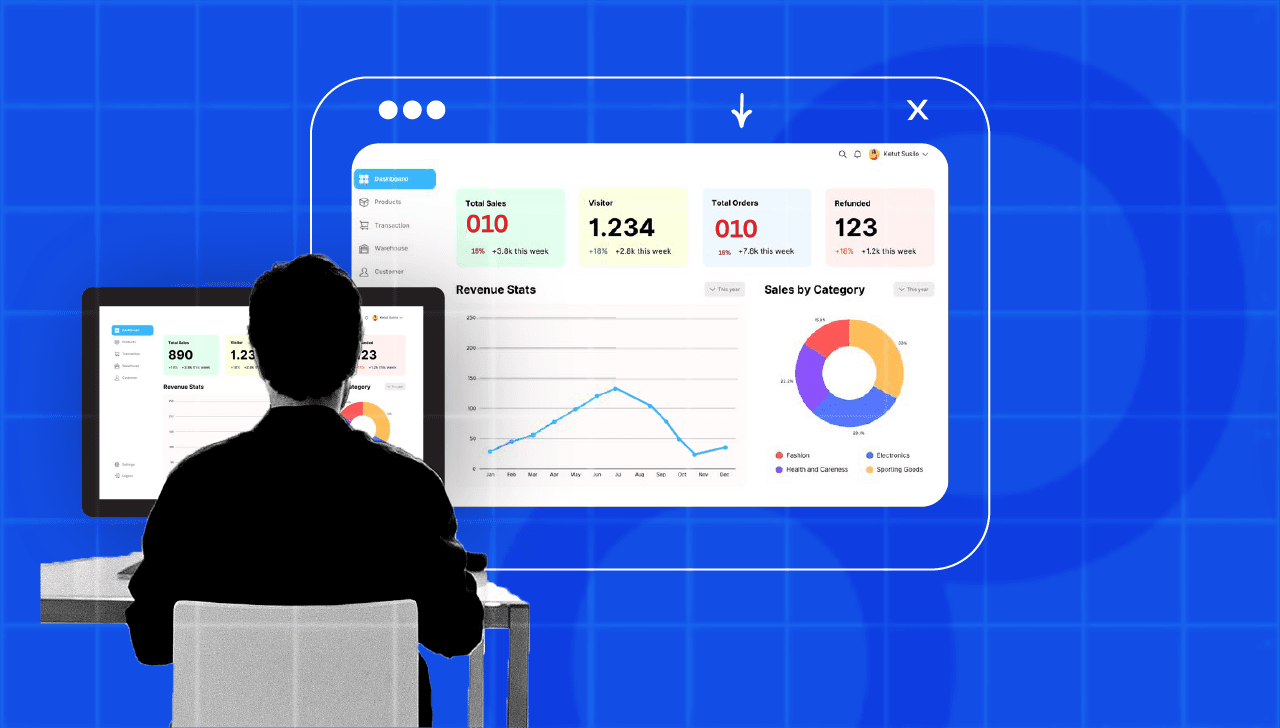It’s a jungle out there. Companies are waging war for customer attention, throwing everything they’ve got into the mix. You’ve got data scientists working late nights, developers launching product tweaks weekly, and marketers in an all-out frenzy to win over the hearts (and wallets) of customers.
And it’s possible you’re juggling all the hats as a startup founder.
Because to be honest, customer loyalty is worth its weight in gold, and in today’s digital age, every business wants to lock in as much loyalty as they can.
Personalization started as a neat trick. Remember when “Dear [Your Name]” in email headers felt fresh? That was Personalization 1.0. It was about basic segmentation, dropping people into categories, and hoping they’d stick around.
But things moved quickly, and companies found themselves armed with more data than they knew what to do with.
So, what triggered this shift to hyper-personalized marketing?
Two things: data and desperation.
With the pandemic (let’s not mince words: COVID-19 was a game-changer), people shifted to online everything, and businesses followed. Shopping online, working online, celebrating birthdays online—it all created more data points than we’d ever seen before.
And in the face of global chaos, consumer expectations changed. People wanted brands that “got” them, brands that showed up with relevance, empathy, and speed. They weren’t interested in generic offers anymore; they wanted experiences that felt almost tailor-made for their new, digital lives.
Now, hyper-personalization is about leveraging behavioral data, AI, and predictive analytics to understand not just what customers do, but why they do it. If personalization was about being in the right room, hyper-personalization is about standing at the right spot in that room, holding out exactly what the person wants, before they even ask for it.
As a result, behavior analytics tools have become indispensable. They’re the difference between hoping your message hits the mark and knowing it will.
In this article, we’ll explore the 5 best behavior analytics tools available today, including a revolutionary player—tools that can help marketers and startup founders move beyond guesswork and deliver the kind of experiences that actually convert. Let’s get into it.
1. SessionStack
Every click, every hesitation, every scroll—it’s all there, clear as day. SessionStack helps you understand why they left, why they clicked the wrong button three times, or why they hovered over a product but didn’t buy.
Real time interaction
What sets SessionStack apart from the crowd is the live co-browsing. It’s like your support team sitting next to a confused user, pointing at the screen and saying, “Click here, not there.” Except it’s digital. Your support rep can join the user’s session, live, with barely any lag, and guide them through those tricky spots that drive people to abandon carts.
This is a lifesaver for complex onboarding processes or high-stakes conversions. Think about it: instead of guessing what frustrated your user, you know it—and you fix it in the moment.
Logs every bug
Errors happen. A JavaScript error here, a broken link there. Users don’t report them—they just leave. SessionStack logs every error—complete with stack traces. Your dev team isn’t going in blind; they get the exact breadcrumb trail to fix the issue. It’s like having an auto-diagnose feature for your website’s UX problems. This means the gap between an error and the solution gets shortened, dramatically.
Segmentation
SessionStack lets you slice and dice your users by behavior, demographics, or custom attributes. Who’s getting stuck on page two? Who keeps bouncing off the payment gateway?
Data privacy
No one wants to feel like they’re being surveilled 1984-style, and users are more privacy-conscious than ever. SessionStack has data masking features, letting you hide sensitive info from session replays. This means you can be compliant (think GDPR) without sacrificing insights.
Downsides
For one, the session replays can lag a bit when they’re long, which isn’t ideal. When you’re trying to diagnose a problem, the last thing you need is waiting for the footage to catch up.
Also, while the tool integrates with big players, it’d be good to see a few more options, especially for those niche platforms some startups rely on.
2. Amplitude
Most tools will show you what users do on your website, but Amplitude wants to know everything—from the moment they first see your brand to that final checkout, and everything in between.
Amplitude calls these “Behavioral Cohorts”—essentially grouping users based on what they do. Did John check out your pricing page but never signed up? Did 20 people click on your new feature, but never actually use it? What’s the difference between people who converted and those who didn’t? And where do the trends start shifting? The tool lets you follow these breadcrumbs to better understand where you’re losing out and how you can fix it.
Insight tools and A/B testing integrations
One of the pain points of most analytics tools is that they leave you with a mountain of data, and it’s on you to turn that into something useful. Amplitude takes that burden off your shoulders with its insight tools and A/B testing integrations. It lets you experiment with different product changes or marketing messages, and shows you clearly what’s working and what’s failing miserably.
The catch? This tool is not for beginners.
If you’re a startup or a small company just looking to get into behavioral analytics, Amplitude can feel like bringing a bazooka to a knife fight. It requires time to learn, and you’ll probably need someone on the team with enough data science chops to wield it properly. Plus, the enterprise-grade pricing can make you think twice if you’re not sure you’ll extract the value.
3. Tableau
Tableau takes all those numbers, all those data points, and turns them into something you can actually see, understand in a way that even the most data-averse people on your team can.
What’s happening on your site? Where are the conversion leaks? Why are certain products performing better than others? Tableau helps you visually map all of this out and act on it.
Real time dashboard
Understanding your user behavior after the fact isn’t good enough—you need to know what’s going on as it happens. Tableau’s real-time dashboards let you do exactly that. Plus, Tableau integrates with just about everything. Whether it’s Google Analytics, Salesforce, or even Excel spreadsheets, Tableau’s ability to pull in data from multiple sources means you get a complete picture
The tool has its own AI engine
It’s called Einstein Discovery—which adds another layer to your analysis. It’s not just showing you what happened; it’s making predictions, drawing correlations, and pointing you toward the kind of data that actually matters. Tableau tells you, “Hey, this trend over here? It’s worth your attention,” or, “This spike in activity? Here’s what might be causing it.” Instead of drowning in data, you get a shortlist of insights that help you prioritize what’s important.
Why marketers love it
One of the reasons marketers love Tableau is because it doesn’t require you to have a Ph.D. in data science. Sure, there’s a learning curve—no tool this powerful is completely plug-and-play—but Tableau is designed to make data visual, interactive, and intuitive. With drag-and-drop capabilities, you can build out charts, graphs, and entire dashboards without writing a single line of code. This means you can focus more on strategy and less on figuring out how to work the tool.
But let’s not pretend it’s all roses.
Tableau’s pricing can be prohibitive for small businesses, and its rich features can be overwhelming if you’re just dipping your toes into behavioral analytics. For companies without a dedicated data analyst or a business intelligence (BI) team, Tableau might feel like using a chainsaw to cut butter. And while it does a fantastic job at visualization, it doesn’t collect the data—that part is up to you. If your data sources are a mess, Tableau can’t save you from that.
Featured read: Best CRO tools for marketing teams
4. Hotjar
Heatmaps are these visual overlays that show you exactly where users are clicking, how far they’re scrolling, and which elements they’re completely ignoring. You’ll find out if people are gravitating towards your shiny new CTA button or if they’re totally missing it. It’s the simplest way to get a bird’s-eye view of what’s attracting user attention and where you’re losing them.
Feedback widgets
One thing that sets Hotjar apart from some other behavior analytics tools is that it doesn’t just let you watch—it lets you ask. The feedback widgets are these nifty little pop-ups that allow users to share their thoughts in the moment. Someone is struggling on your checkout page, and right there, Hotjar prompts them to share what’s on their mind.
Why marketers love it
The thing about Hotjar is that it’s incredibly intuitive. Marketers love it because it gives them the insight they need without requiring a background in data science. It’s visual, it’s straightforward, and most importantly, it makes your users’ actions crystal clear. Plus, unlike the heavy-hitters like Tableau or Amplitude, there’s a relatively short learning curve. You can get up and running quickly, which is a huge plus if you’re trying to solve an immediate conversion crisis.
The drawbacks
Hotjar’s strength lies in visual insights, but it’s not an end-to-end analytics platform. It’s a complementary tool, not a replacement for your core analytics setup. Also, if you’re dealing with massive traffic volumes, watching individual session replays can be a time sink—it’s more valuable for small-to-medium businesses or focused analysis rather than enterprise-level scale.
5. GrowthApp
GrowthApp makes hyper-personalization scalable by focusing on tailored, high-impact recommendations for every step of the customer journey. It’s ideal for businesses ready to move beyond generic optimizations and create experiences that speak to users as individuals.
Precise behavior analysis from your website data
Its strength is in taking all that data from your website—clicks, bounces, scrolls—and running it through an AI CRO engine that doesn’t just give you insights but tells you what to do about them. Think of it as having a team of data analysts who don’t sleep, combing through every metric until they spot the friction points. The point here isn’t just to show you where users drop off, it’s to understand why—and what specific tweaks can push them past that hesitation.
Here’s an example: let’s say you’ve got a high bounce rate on your pricing page. GrowthApp doesn’t just highlight the metric; it breaks down potential issues—maybe your copy isn’t addressing the right value props, or maybe your call-to-action isn’t clear. And it doesn’t leave you there—it makes concrete recommendations, backed by data, to turn those browsers into buyers.
Prioritize important hyper personalization opportunities
GrowthApp does something other hyper-personalization tools struggle with: it prioritizes actions. Not every insight is worth acting on immediately, and GrowthApp’s AI filters through the noise to pinpoint which adjustments will have the highest impact. You’re not left to decide between dozens of metrics or potential tests; GrowthApp gives you a clear action plan, prioritizing changes that will best enhance the individual experience.
It works the entire conversion funnel
GrowthApp’s capabilities extend across the entire customer journey, offering insights into:
- Business offering & Ideal Customer Profile (ICP) analysis: Align your strategies with market demands and audience expectations.
- Website traffic analysis: Identify high-converting channels and understand visitor behaviors to optimize traffic sources.
- UI/UX copy & design optimization: Enhance user interface and content to improve engagement and conversion rates.
It’s a crowded market, but these 5 behavior analytics tools are the best
As customer expectations evolve, the only way forward is to make every interaction meaningful. The tools highlighted here are designed to help you do exactly that—by understanding who your users are, predicting their needs, and adapting the experience to exceed their expectations.
Hyper-personalization is the future, and with these tools, you’ll have the capabilities to not just meet your customers where they are, but to guide them towards loyalty and lasting engagement.




